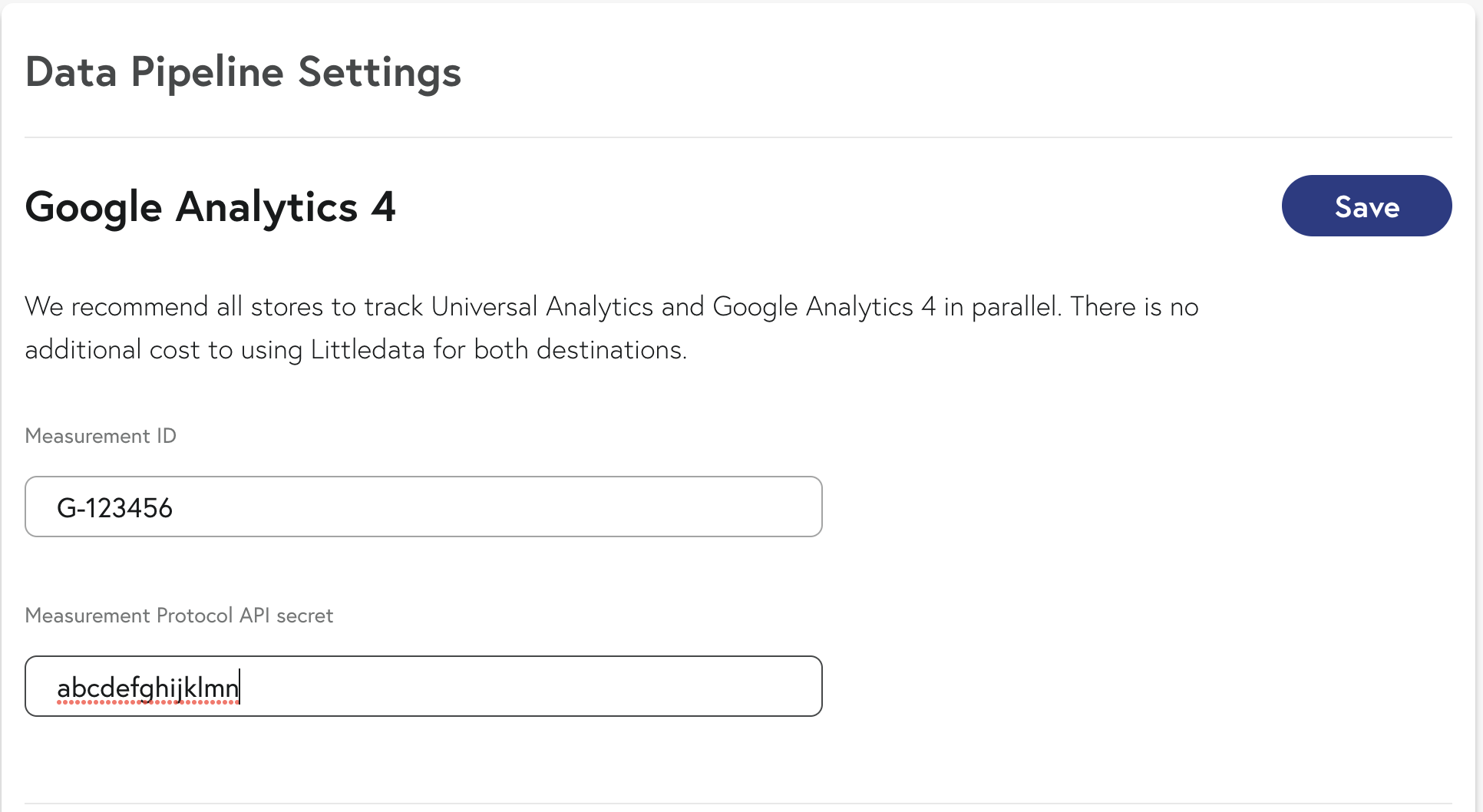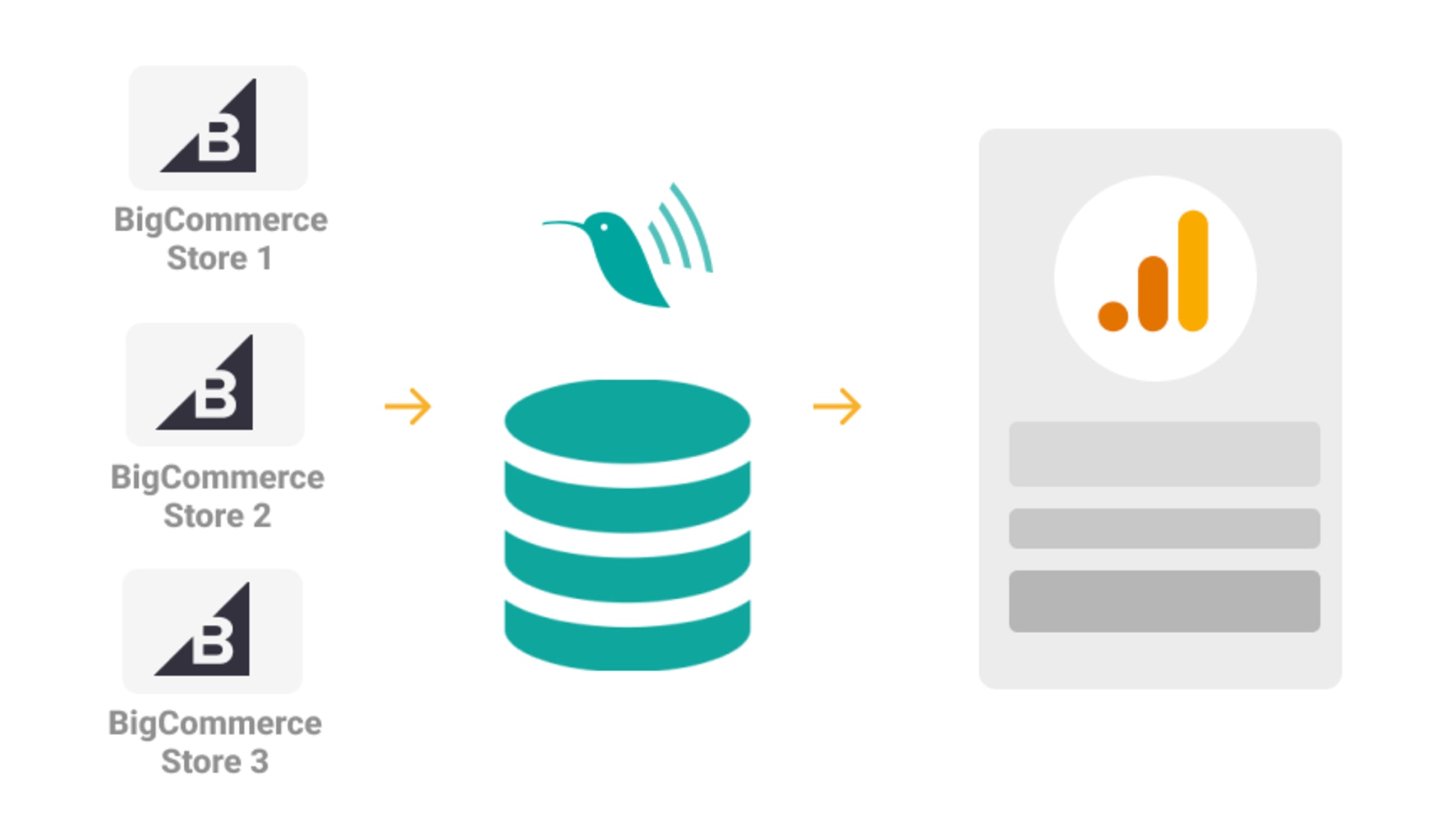How It Works: BigCommerce to Google Analytics
Updated on 2021-12-22
Littledata's app provides an advanced Google Analytics integration for BigCommerce stores, using a combination of client-side and server-side tracking to ensure accurate data about your BigCommerce store in Google Analytics (GA4), the latest version of Google Analytics.
- Complete tracking that works automatically
- Server-side tracking to capture every sales, recurring order and refund
- Sessions stitched together for accurate marketing attribution
- Multi-Storefront compatible
Littledata automatically integrates with BigCommerce sites to capture every customer touchpoint, including sales, marketing, customer and product performance data. You can install the app directly from the BigCommerce app store.
What we track
Littledata automatically improves marketing attribution and captures more granular data about shopping behavior on your site. In addition, the app captures every transaction, including recurring orders and refunds. All of this data is available directly in Google Analytics.
Client-side events
Client-side events tracked by Littledata, via a script loaded within your BigCommerce script manager.
These events show up in Enhanced Ecommerce reports.
| Event Name | Description |
|---|---|
| page_view | User has viewed a page |
| view_item_list | User has viewed a product link as they scroll down the page |
| view_item_list | User has viewed a product link as they scroll down the page |
| add_to_cart | The user has added a product to the cart and left it in the cart for more than 10 seconds |
| remove_from_cart | The user has removed a product from the cart |
| begin_checkout * | User has started checkout |
| add_payment_info * | User has completed checkout step 2 |
| add_billing_info * | User has completed checkout step 3 |
Server-side events
Server-side events are collected from BigCommerce's cloud servers and passed onto Google Analytics.
| Event Name | Description |
|---|---|
| add_to_cart | The user has added a product to the cart and left it in the cart for more than 10 seconds |
| remove_from_cart | The user has removed a product from the cart |
| purchase * | The customer has completed a web order (excluding iOS, Android, POS, and draft orders) |
| refund | Web order has been refunded (full, partial, or custom refund) |
* Purchase events may be delayed by up to 30 seconds to include any updates to order tags or status made by other apps after the order was created.
For details on event properties and additional fields, see our Google Analytics and GTM data layer guide.
View the complete tracking schema for Littledata's Google Analytics connection
Subscription events
Littledata's Recharge integration for BigCommerce automatically captures recurring orders, including first-time subscriptions and recurring orders, and ties them back to the original marketing touchpoint.
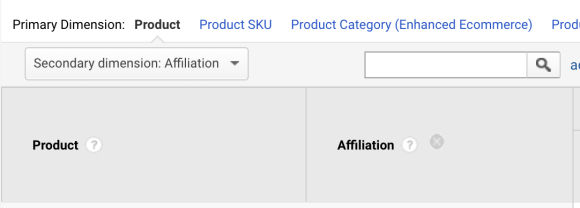
We use the Affiliation dimension in Google Analytics to differentiate subscription orders from one-time purchases. To use affiliation in reports, set affiliation up as a custom dimension. These are the possible values:
- One-time order: BigCommerce
- First-time recurring order: Subscription First Order
- Recurring order: Subscription Recurring Order
If you are using Recharge and BigCommerce, no additional setup steps are necessary to track recurring orders.
How it works
Littledata uses a combination of client-side and server-side tracking to ensure accurate ecommerce data in Google Analytics. Here are more details about how it works.
Client-side tracking
During the automatic installation process, Littledata adds a data layer and tracking script to all of your store pages.
- A
LittledataLayerwindow-scope Javascript object is added on all pages, which you can also use with Google Tag Manager (GTM). - A minified tracking script, hosted on a content delivery network (CDN), is loaded in the
<head>of each page - Google's gtag library is then loaded on each page
- Google's client ID (user identifier) is passed to our servers to ensure consistent user journey tracking
We then stitch this client-side (browser) tracking together with server-side tracking to connect marketing channels and browsing behavior with checkout flows and purchase behavior.
Server-side tracking
During the setup, Littledata also adds a set of webhooks to your BigCommerce store. This means that each time a user takes action our servers can relay that event to Google Analytics, ensuring 100% accuracy. There are many advantages to this approach:
- Smaller script in the browser = faster page load
- Complete event capture for checkout flow, including sales and refunds/returns
- Avoids no tracking of the order when the user doesn't wait for the thank you page to load
- Avoids double tracking of the order status page when the user reloads
- Accurate marketing attribution (sessions stitched together) across all checkout types
Multi-Storefront Compatibility
Littledata supports BigCommerce Multi-Storefront setups, making it easy to track orders from microsites or multiple regions in the same Google Analytics property.
When you set up Littledata, our tracking scripts are injected in all enabled storefronts. Those storefronts then benefit from our client-side and server-side tracking mentioned above. You just need to set up an additional view in Google Analytics with filters for each storefront. See how to set up multi-storefront reporting in Google Analytics with Littledata.
Learn more about BigCommerce's Multi-Storefront functionality, which allows you to sell in new regions (multi-region or multi-currency sales), brands or segments.
Data Pipeline Settings
In addition to the features listed above, Littledata provides an in-app settings section called Data Pipeline settings.
This section enables you to change, add, or remove your GA4 Measurement ID or Facebook CAPI Pixel ID:
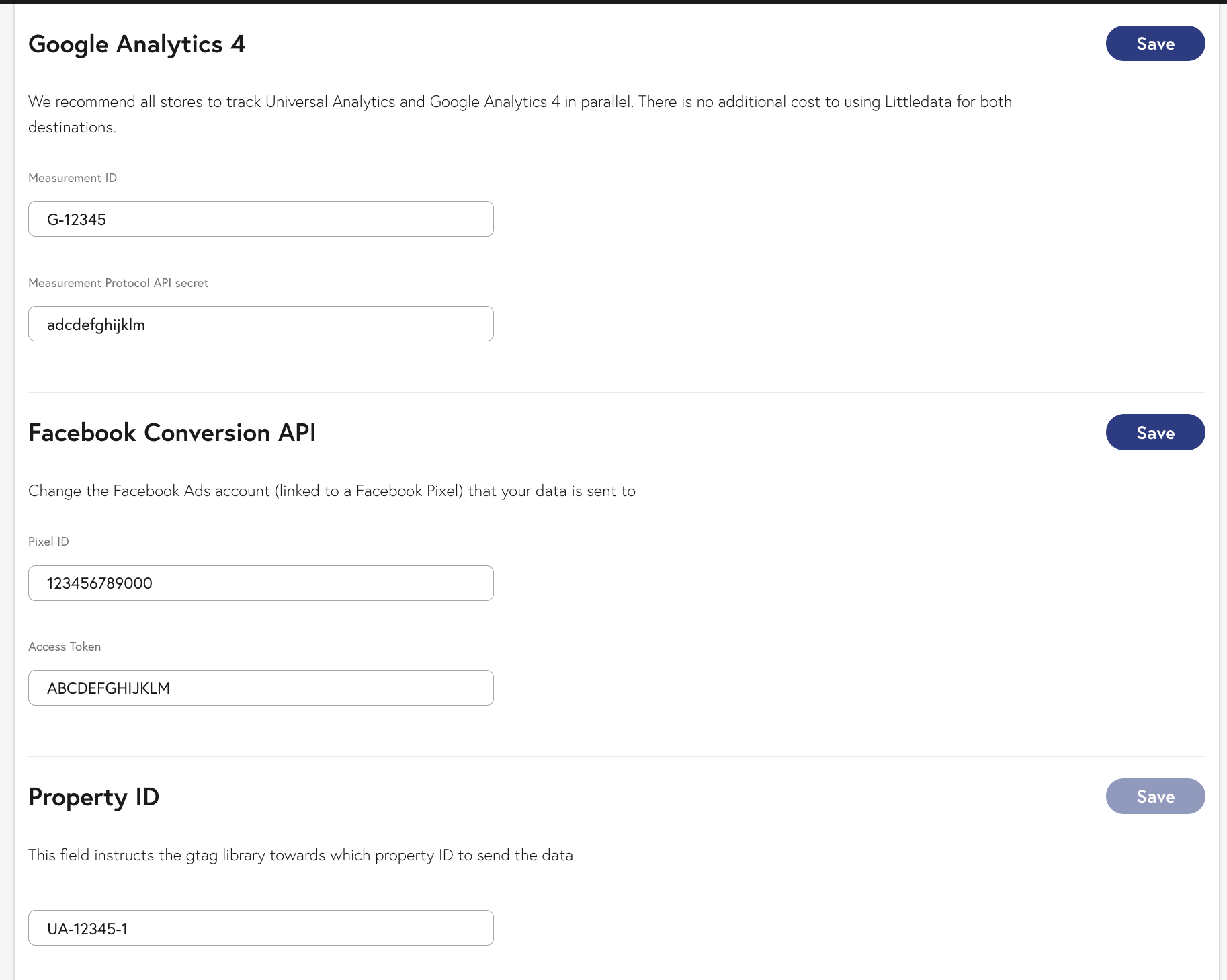
Furthermore, the Anonymize IP setting allows you to mask IP addresses to better support user privacy, while the Google Signals setting opts your site into using Google Signals.
These are turned ON by default but can be turned off based on your needs.
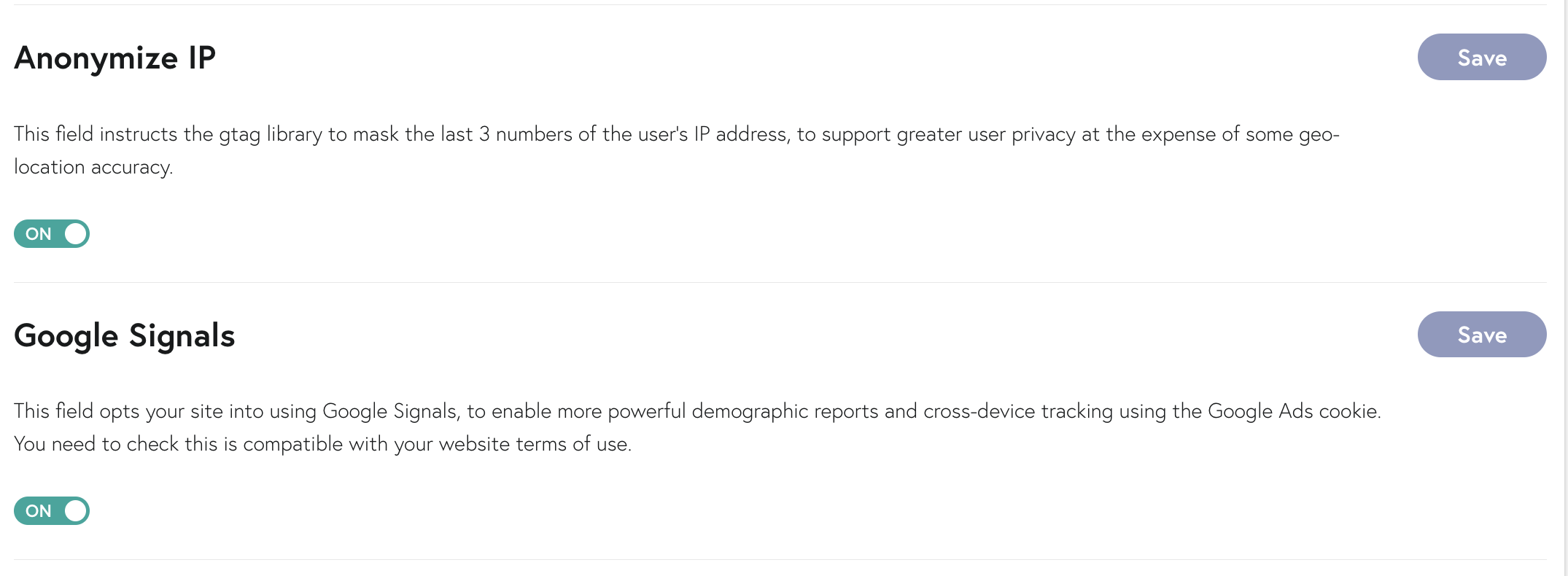
Lastly, the Extra Linker Domains setting allows you to enable cross-domain tracking on destination subdomains:

How to enable GA4 tracking
Fill in the fields with your Measurement ID and Measurement Protocol API secret, then hit SAVE:
